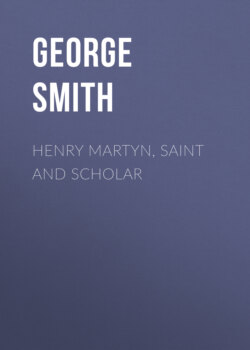Читать книгу Henry Martyn, Saint and Scholar - George Smith - Страница 3
На сайте Литреса книга снята с продажи.
PREFACE
ОглавлениеTable of Contents
In the year 1819, John Sargent, Rector of Lavington, published A Memoir of the Rev. Henry Martyn. The book at once became a spiritual classic. The saint, the scholar, and the missionary, alike found in it a new inspiration. It ran through ten editions during the writer's life, and he died when projecting an additional volume of the Journals and Letters. His son-in-law, S. Wilberforce, afterwards Bishop of Oxford and of Winchester, accordingly, in 1837 published, in two volumes, Journals and Letters of the Rev. Henry Martyn, B.D., with an introduction on Sargent's life. Sargent had suppressed what Bishop Wilberforce describes as 'a great variety of interesting materials'. Especially in the lifetime of Lydia Grenfell it was thought necessary to omit the facts which give to Henry Martyn's personality its human interest and intensify our appreciation of his heroism. On the lady's death, in 1829, Martyn's letters to her became available, and Bishop Wilberforce incorporated these in what he described as 'further and often more continuous selections from the journals and letters of Mr. Martyn.' But, unhappily, his work does not fully supplement that of Sargent. The Journal is still mutilated; the Letters are still imperfect.
Some years ago, on completing the Life of William Carey, who had written that wherever his friend Henry Martyn might go as chaplain the Church need not send a missionary, I began to prepare a new work on the first modern apostle to the Mohammedans. I was encouraged by his grand-nephew, a distinguished mathematician, the late Henry Martyn Jeffery, F.R.S., who had in 1883 printed Two Sets of Unpublished Letters of the Rev. Henry Martyn, B.D., of Truro. For a time I stopped the work on learning that he had come into possession of Lydia Grenfell's papers, and was preparing the book which appeared in 1890, Extracts from the Religious Diary of Miss L. Grenfell, of Marazion, Cornwall. Except her letters to Henry Martyn, which are not in existence now, all the desirable materials seemed to be ready. Meanwhile, the missionary bishop who most resembled Martyn in character and service, Thomas Valpy French, of Lahore and Muscat, had written to Canon Edmonds of S. Wilberforce's book as 'a work for whose reprint I have often pleaded in vain, and for which all that there is of mission life in our Church would plead, had it not been so long out of print and out of sight.'
My aim is to set the two autobiographies, unconsciously written in the Journals and Letters of Henry Martyn and in the Diary of Lydia Grenfell, in the light of recent knowledge of South Africa and India, Persia and Turkey, and of Bible work and missionary history in the lands of which, by his life and by his death, Henry Martyn took possession for the Master. Bengal chaplain of the East India Company, he was, above all, a missionary to the two divisions of Islam, in India and Persia, and in Arabia and Turkey. May this book, written after years of experience in Bengal, lead many to enter on the inheritance he has left to the Catholic Church!
